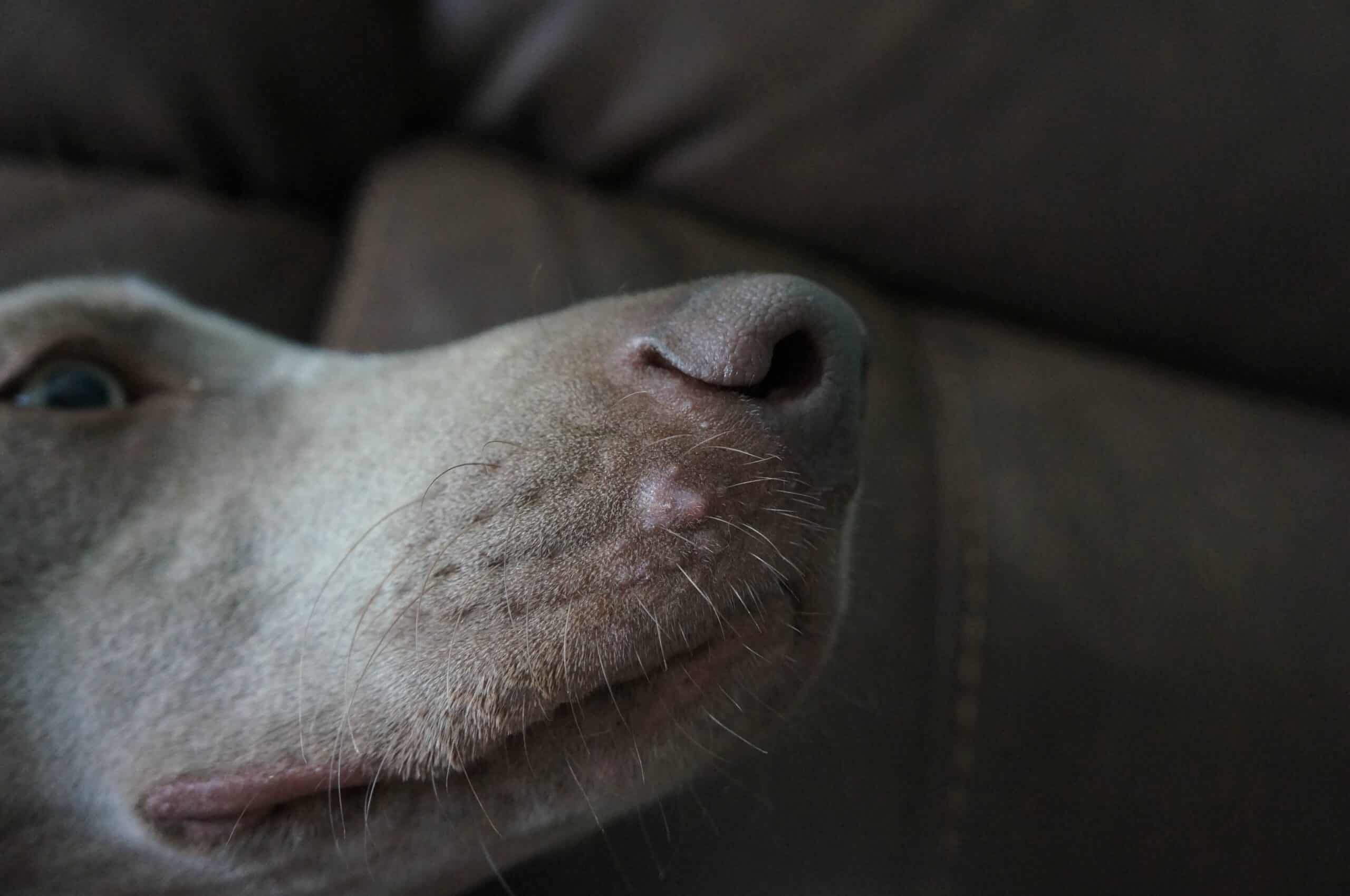
Whiskersfor which the technical term is vibrissaeare a specialized type of hair found in many mammals including cats and dogs. Dogs whose vibrissae have been removed seem more uncertain in dim light.

While a fully-whiskered coat would essentially give your dog superpowers he would probably have a hard time getting much use out of them.
Why do dogs have bumps with whiskers. Like cats dogs will often reflexively flare their whiskers and then point them in a forward direction when they feel threatened which some scientists believe indicates that whiskers play a role in the defense strategy during combative situations with. Dogs whose vibrissae have been removed seem more uncertain in dim light. Under these conditions they actually move more slowly because they are not getting the information that they depend upon to.
You must have observed that dogs mainly shake their head and it is when a dust particle touches the whiskers. They can also be seen flinging it off. This reaction protects their nasal passage and eyes from the dust particles which when ingested can cause discomfort.
Studies have claimed the chances of dogs using whiskers to locate food sometime in canine history. However modern more domesticated dogs do not need to hunt food but it still helps them to trace that one drop of chocolate syrup which fell somewhere under the table and lick it clean. Why are Whiskers Important.
Whiskers give dogs a sense of direction. While a dogs sense of smell is mostly responsible for how it perceives things people or places whiskers also contribute to how they view them. When a dog needs to determine how close or distant an object is from him- whether its a nearby wall that the dog is about to.
Why Do Dogs Have Whiskers. A distinctive element of dogs are the whiskers. All dog breeds have whiskers more or less long and more or less thick and represent an added value to the ability to perceive the world around them.
Lets find out together how mustaches are made and what function they perform in the dog. All dogs have whiskers. When I google dog vibrissae it looks like that is the whiskers on the snout not what I was asking about.
Also I have tried to find out what they were. I typed in things like warts on side of face or bumps under skins and it just pulls up serious health issues not for the little nub thing Im asking about. Pyoderma is one such disorder where a bacterial skin infection causes cuts filled with pus.
Demodex mites can burrow into the hair follicle causing pus-filled sacs and loss of whiskers in a disease called demodectic mange. Plucking chin whiskers can cause infection because of the exposed nerve mound. Using their whiskers dogs can better navigate in the dark judge the sizes of small spaces avoid danger and track prey.
Even if your pet doesnt need them for. Whiskersfor which the technical term is vibrissaeare a specialized type of hair found in many mammals including cats and dogs. Its a funny fancy-sounding word but its just the technical term for something that most pet owners are familiar.
Why do dogs have whiskers. Whiskers provide our dogs with lots of information about their environment. The roots of the long coarse and pliable vibrissae are embedded deep into our dogs skin and have a rich nerve supply.
These could be irritations to something your puppy is chewing or eating or they could be hives - a reaction to a bug bite or again something your dog ate or is chewing. It could also be a skin infection. My advice would be to try and give your dog some benadryl 1mg per pound and see if that helps.
Whiskers are pieces of coarse hair that sprout of out a dogs hair follicles on their face. The average dog has whiskers above their eyes on the sides of their muzzle and on their chin. Your dogs whiskers allow it to navigate their environment and avoid threats that could be potentially harmful to them.
Whiskers sure do seem handy so why dont dogs have them all over their bodies. Why are they only confined to his face. While a fully-whiskered coat would essentially give your dog superpowers he would probably have a hard time getting much use out of them.
Basically when anything in your dogs environment happens to rub against your dogs whiskers the whiskers vibrate stimulating special nerves found in the hair follicles which in turn provide feedback about the surrounding environment explains veterinarian Dr.